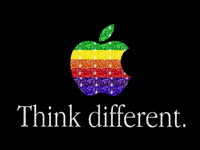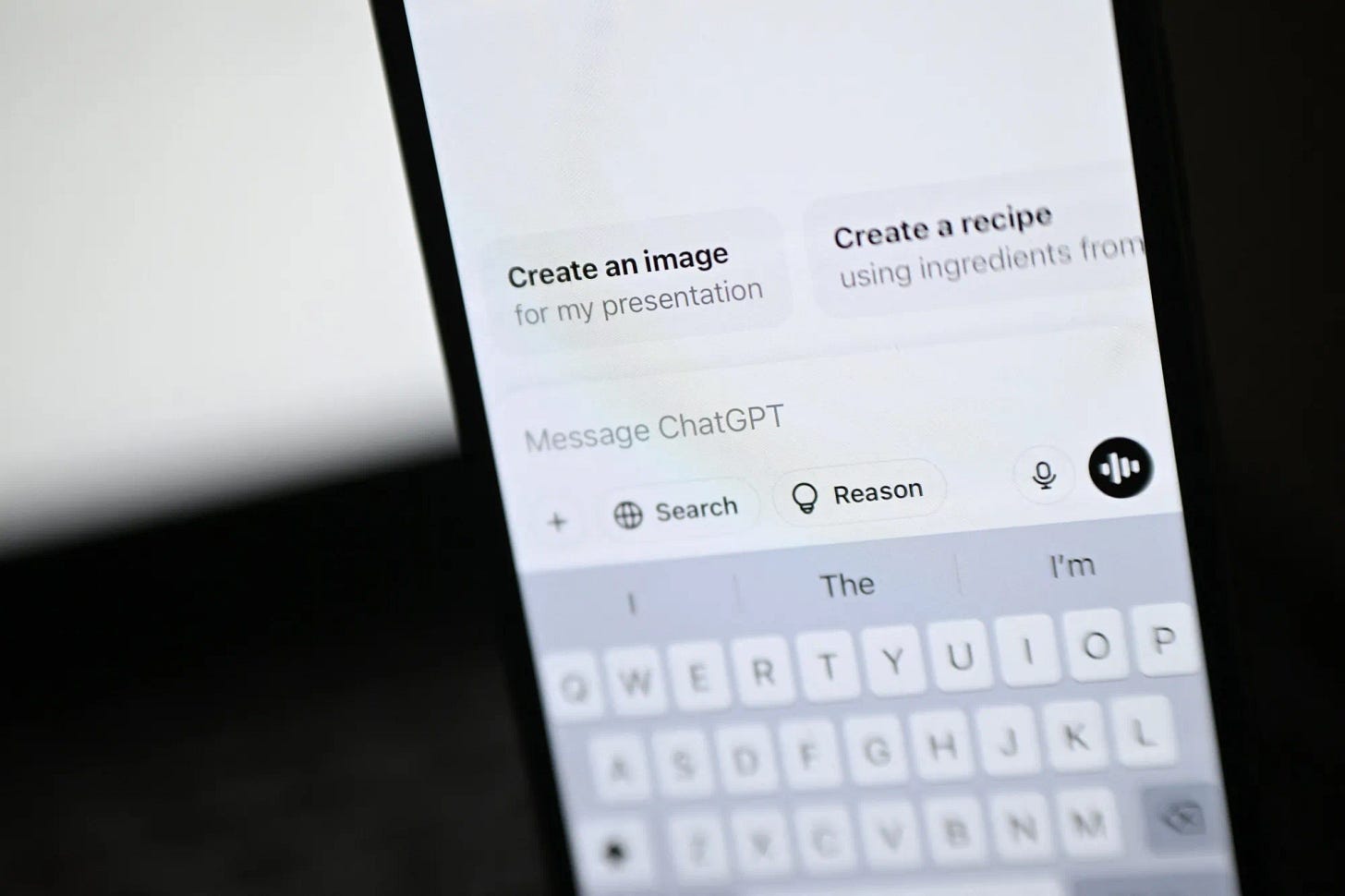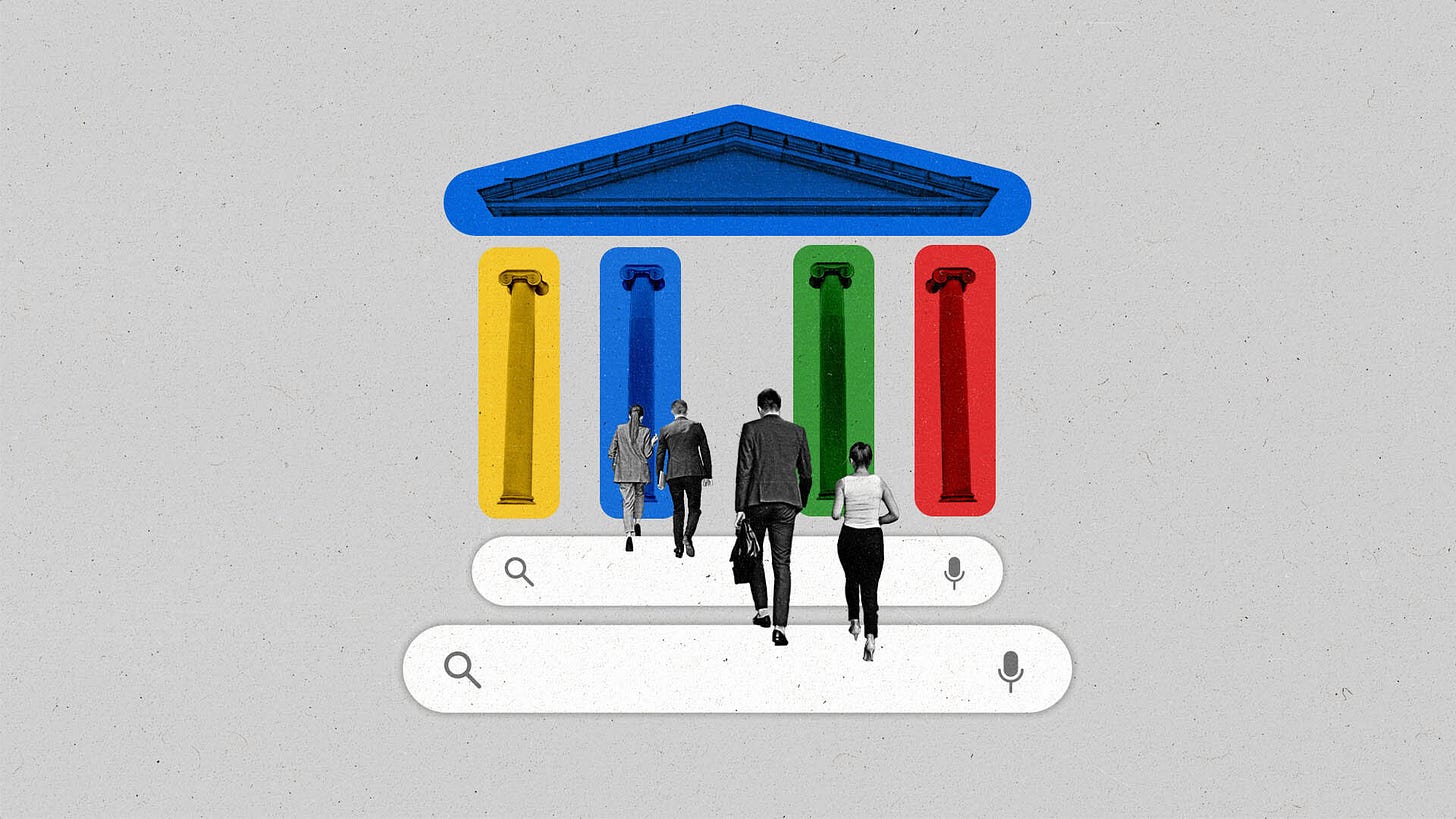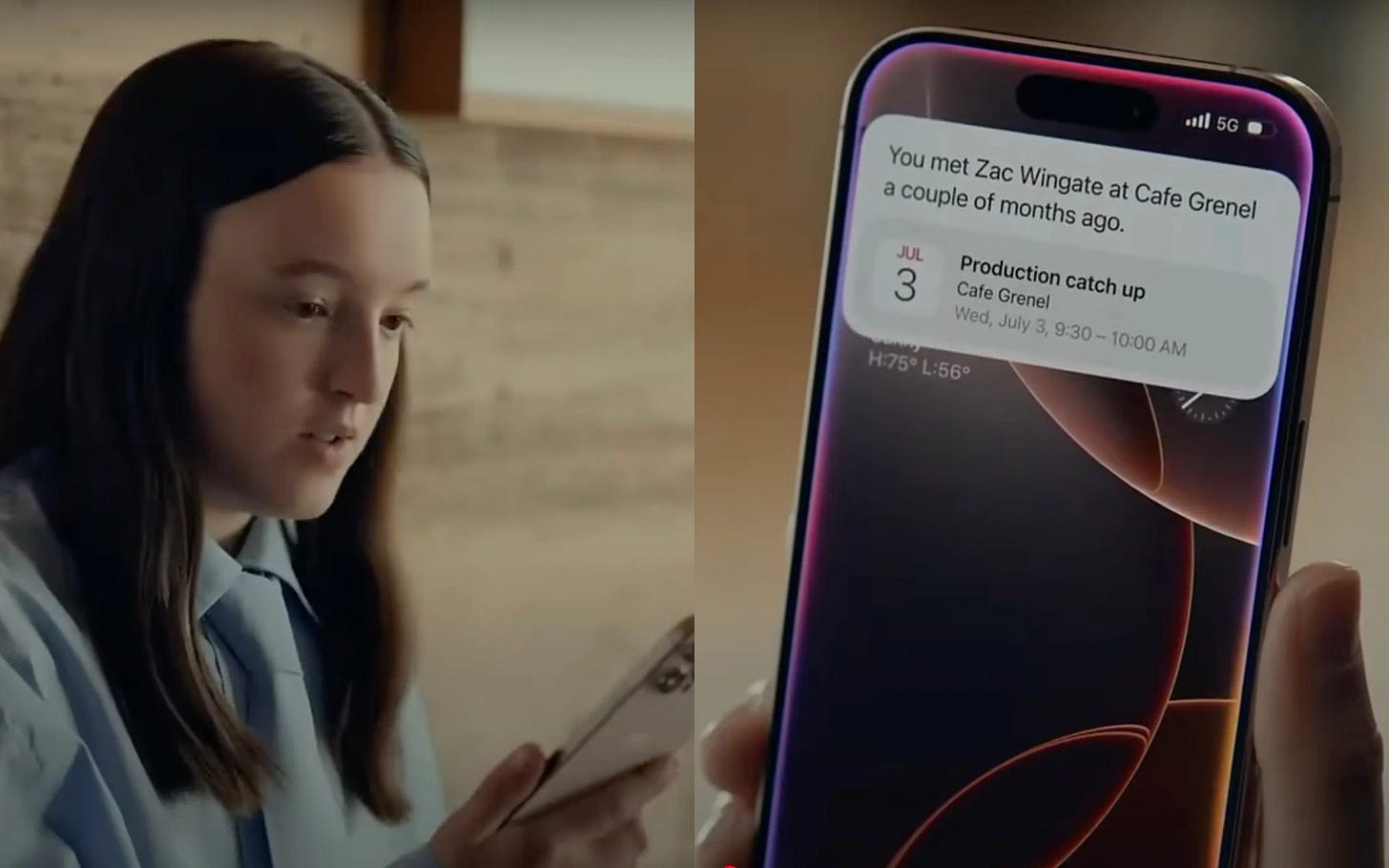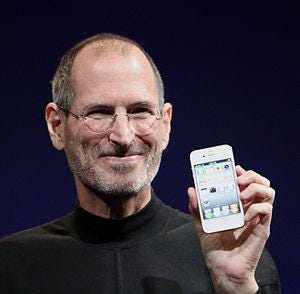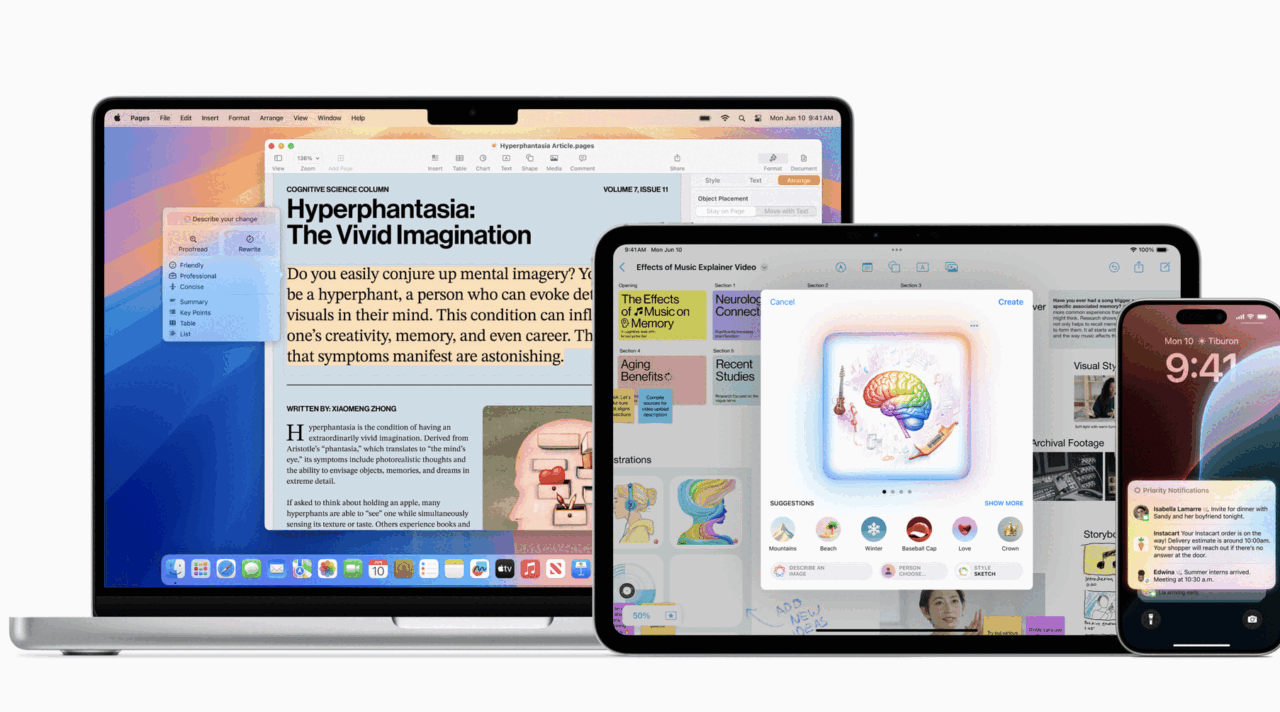
AI: Rising debate over Apple needing own AI Chatbot. RTZ #859
A lot of discussion been occurring debating Apple’s ‘Build vs Buy’ AI strategy, with and beyond an AI powered Siri, with and beyond its own AI Clouds, with and beyond its partnership with OpenAI, and perhaps Google et al, as well as with and beyond it’s home-grown ‘Apple Intelligence’. This has been the central AI strategy question around Apple in this AI Tech Wave.
Especially as its ‘Mag 7’ peers race ahead with multi-hundred billion dollar investment strategies around LLM AIs and attached Ai chatbots, AI data center and compute infrastructure to stand it all up with ‘intelligence tokens’, and of course world class AI talent that is currently leaking to Meta and others.
Bloomberg raises this question in “Apple’s ChatGPT-Style Chatbot App Deserves a Public Release”:
“When Apple Intelligence was unveiled last year, the debut fell flat. Loyalists praised the keynote presentation, but sharper eyes saw an uncomfortable truth: The iPhone maker was lagging behind.”
“The technology itself was underwhelming, the messaging inconsistent, and Apple’s decision to pose as an industry leader — while dismissing the chatbot-driven approach of rivals — quickly backfired. In a rare misstep, the company bet on the wrong horse: deeply integrated AI features, instead of a ChatGPT-style experience.”
“To sell its vision, Apple even revived the old “for the rest of us” slogan from the Macintosh era, positioning generative AI as a set of utilities. You could sort messages in the mail app, create custom emoji with Genmoji, or use Writing Tools for edits and summaries.”
But the conventional wisdom is that Apple is missing out on the AI Chatbot side. Perhaps relying too much on the ‘easy money’ that it can continue to get from Google for example, to use its Gemini AI technologies, post the recent Google antitrust decision around Search payments, and Google’s Chrome browser.
The drumbeat for Apple having its own AI Chatbot is growing.
“Apple may be right that this method of systemwide integration will be the future, but its insistence that consumers wouldn’t care about chatbots was a costly mistake.”
“In fairness to Apple, it did integrate OpenAI’s ChatGPT into the Siri voice assistant. But the tie-in was shallow and non-conversational, pushing most people who wanted a real chatbot experience to just open the standalone OpenAI app. And had Apple tried to launch its own bot last year using its in-house models, the result would almost certainly have been a disaster — on par with the Apple Maps debacle in 2012.”
Again, Apple seems to be thinking different as it were on its own definition of an AI Chatbot. Much like it did for Apple Intelligence (AI, get it?), and its own AI Private Cloud Compute strategy.
“That brings us to this year, when Apple has begun to acknowledge what rivals already knew: A ChatGPT-like experience and the ability to tap into the open web is a necessary pillar of any cohesive generative AI strategy.”
“In August, I reported that Apple had formed a new team — Answers, Knowledge and Information, or AKI — to build products for retrieving general knowledge, an area where chatbots shine. And earlier this month, I revealed that Apple is also developing an AI-powered web search tool, a move that edges the company closer to a ChatGPT- or Perplexity-style experience.”
“The new Siri’s Personal Context feature shown in a TV ad.Source: YouTube”
The details of this internal project are noteworthy:
“At the heart of this push is a revamped Siri, code-named Project Linwood, that’s slated to debut as early as next March. Linwood overhauls Siri’s infrastructure, combining an external model — likely Google’s Gemini — with technology from Apple’s own Foundation Models group, known as AFM.”
“In addition to powering web search, Linwood will also unlock features Apple originally planned for early this year, such as fulfilling Siri requests using on-device data and on-screen content. And it will enable full iPhone navigation through voice control.”
And of course Apple has its own internal AI Chatbot proto-strategy, beyond its partnership with OpenAI and potentially others:
“In order to test the new Siri technology, Apple has built an internal full-fledged chatbot app — code-named Veritas — for submitting queries without the need for voice interaction. The app allows employees to type requests, receive information and hold back-and-forth conversations like they would with ChatGPT. It can also conduct in-app actions, such as editing a photo or searching through a user’s personal data.”
“While the company has experimented with chatbot-like tools before, those were web-based rather than standalone apps. The latest development might make it sound like we’re heading toward a consumer-facing Apple chatbot. But that’s not the case, I’m told. Apple doesn’t currently plan to offer the chatbot to consumers — it’s simply using it to test how well the new Siri will work.”
Bloomberg’s journalist Mark Gurman is not too optimistic about this approach, led by CEO Tim Cook:
“This, I believe, is a mistake. While the improvements to Siri will bridge some of the gap with AI leaders, services like ChatGPT, Perplexity and Gemini have made it abundantly clear that people want a proper chatbot experience. It’s proven to be a compelling and useful tool for many parts of life — from generating images to conducting research and retrieving information.”
“The lack of a chatbot also could make it harder for Apple to show how far it’s come. Siri, after all, has some baggage. After longstanding complaints about the assistant and launch delays of the upgrade, Apple risks muddying what could be breakthrough AI technology by solely embedding it within this existing platform. Launching the chatbot as a standalone app could generate far more interest.”
That the glass half empty perspective on the Apple AI Chatbot debate. The glass half full may be that Apple, as a platform gateway to billions of global mainstream users of its unique hardware and software driven ecosystem, can be a distribution point for the rising wave of AI Chatbots and undelying LLM AI technogies, who will all pay for distribution to those users.
A strategy Apple kind of used well with telco carriers, when it launched the original iPhone and their annual iterations. There too they started with AT&T exclusively initially, but then broadened to all the US carriers, and eventually to almost every major carrier around the world.
A similar strategy can be employed in my view with AI Chatbots, and other emerging AI applications and services that are likely to erupt at scale over the next two to three years.
Note that today’s early AI Chatbots from OpenAI, Google, Anthropic and others are all relying on monthly subscription revneues from end users, be they businesses or consumers. This is similar to telcos earning monthly subscription revenues for cellular and data services back when phone were mostly voice phones and now are handheld texting and data computers while doing voice phone calls some of the time.
Apple inserted itself into that multi-trillion dollar value chain in the decades since the iPhone launch in 2007. And leveraged it better than almost any other tech company selling smartphones on the planet. Things like the App Store helped augment those business models into more trillions.
And this time may be no different with AI Chatbots and other AI services. AI Reasoning Agents. AI content, AI Games, AI ecommerce, are just some examples of the cornucopia of AI products and services to come in Box 6 of the AI Tech Stack above.
It again goes to my view that Apple is not too late in its AI strategy. It’s just that AI is growing up at the right scale for its global platform to benefit from ‘win-win’ partnerships in this AI Tech Wave. And make history rhyme again. Far beyond the AI Chatbots of today. Stay tuned.
(NOTE: The discussions here are for information purposes only, and not meant as investment advice at any time. Thanks for joining us here)

